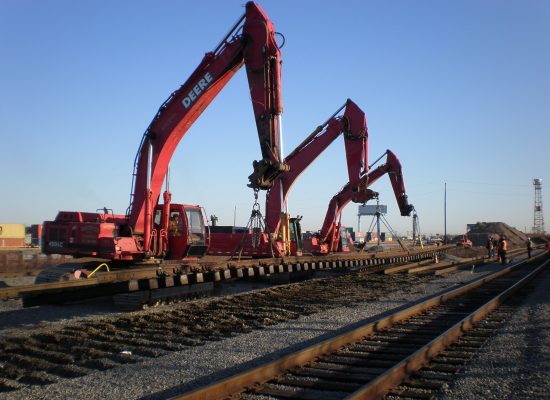Railroad Construction and Maintenance Workers' Compensation Insurance
Employees in all professions face the possibility of injury on the job. This also includes Railroad Construction and Maintenance Employees who face a greater risk than most due to railroad work’s dangerous nature. This is why an employer in this industry must invest in Workers’ Compensation Insurance.

Why Workers' Compensation Insurance
Workers’ compensation is a form of insurance providing wage replacement and medical benefits to employees injured in the course of employment in exchange for a compulsory waiver of the employee’s right to sue their employer for negligence.
Railroad construction and maintenance employees face a greater risk than most due to railroad work’s dangerous nature. As a response to this heightened risk of injury, the federal government passed the Federal Employers Liability Act (FELA) in 1908 to provide railroad workers with certain rights and protections. This act permits railroad workers not covered by their state’s workers’ compensation system to sue their employer for industrial accidents. Benefits include medical treatment and lost wages and can also include pain and damages.
Common Injuries Experienced by Employees
The most common hazards facing railroad construction and maintenance workers include electrocution, falling from moving railway vehicles, being struck by a moving train, and being struck by objects during railroad construction or repair. Common injuries include:
– Broken bones and fractures: Broken bones are among the most common injuries sustained by railroad workers. They can result from something as simple as falling on an oily surface or losing balance while walking on the ballast.
– Burns: Railroaders spend a significant amount of time around hot metal surfaces and risk severe burns. There are also dangers from explosions, hose ruptures, engine fires, and chemical solvents.
– Back, neck, and joint injuries: Railroad work requires heavy lifting and repetitive movement. This can lead to back, neck and joint injuries that can happen suddenly or over a long period.
The Consequences of Not Having Workers' Compensation Insurance
If an employer fails to carry workers’ comp insurance, this can lead to criminal prosecution, fines, and expensive lawsuits. An employer can be fined thousands of dollars depending on the state they operate in. An employer who does not acquire workers’ compensation insurance could suffer severe financial loss due to a lawsuit if an employee is injured at a company that is required to have a workers’ comp policy but doesn’t. Employers may also end up paying large medical bills out of pocket.
Workers' Compensation Required Limits
The limits on a workers’ compensation insurance policy include employee benefits and employer liability. The employee benefits portion of the policy covers medical expenses, rehabilitation expenses, lost wages, and death benefits to the employee’s dependents. Employee benefits do not usually have limits or exclusions.
Employers’ liability limits are defined within each insurance policy. Business owners may choose to increase the limits for coverage. Each state sets the minimum required coverage limits. Legal, statutory liability limits in most states are:
– $100,000 per occurrence for bodily injuries
– $100,000 per employee for bodily injury by occupational disease
– $500,000 policy limit for bodily injuries by disease
The Benefits of A Workers' Compensation Policy
While workers’ compensation policies may differ across jurisdictions, benefits include weekly payments in place of wages, functioning as a form of disability insurance, compensation to the employee for economic loss, reimbursement or payment of medical and like expenses, and benefits payable to the dependents of workers killed during employment.
The Common Workers' Compensation Class Code(s) Used
A class code is assigned by the National Council of Compensation Insurance (NCCI) or by state agencies based on the activities of the occupation.
There are many different workers’ comp class codes within the railroad construction segment. Below is the class code used:
Code 6702: Railroad Construction – NOC
Code 7855: Railroad Construction
The Cost of A Workers' Compensation Policy
There are varying factors that contribute to the cost of workers’ compensation insurance for railroad construction and maintenance workers. These include the type of work performed and risk exposure. The amount you pay for workers’ compensation is a specific rate based on your business’s payroll. Your premium is determined by the type of work done by your employees and your claims history. Workers’ Compensation Insurance for Railroad Construction and Maintenance employees can see minimum rates of $4.59 per $100 or a minimum premium of $1,558.
UnderWrite Insurance Services is a national insurance agency that provides A-rated workers’ compensation insurance to cover railroad construction and maintenance employees. For a free insurance quote, submit an application below or give us a call at 201-580-6806.





